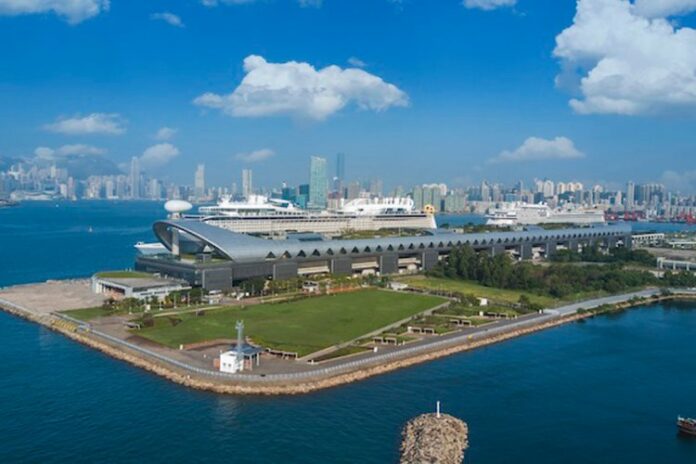The study was undertaken by Bureau Veritas Solutions Marine & Offshore for Worldwide Cruise Terminals, manager, and operator of the Kai Tak Cruise Terminal. The study made use of industry gas dispersal models and representative scenarios based on LNG fuelled cruise ships and LNG bunkering vessels currently in use and under construction.
Jeff Bent, managing director for WCT, said:
“We are proud to support the Hong Kong government’s Clean Air 2035 and Climate Action 2050 Plans, which indicate that the HKSAR government intends to pursue LNG bunkering for ocean-going vessels to greatly reduce air pollution and greenhouse gas emissions.
“With this study, we establish that the Kai Tak Cruise Terminal is a suitable facility for ship-to-ship LNG bunkering to take place, simultaneously with standard passenger operations, for the rapidly growing number of LNG-powered cruise ships.
“Many leading ports have commenced LNG bunkering, and we look forward to joining their ranks. We stand by to assist regulators to craft detailed policies and procedures for an earlier start for the use of this fuel.”
Huw Coffin, general manager BV Solutions M&O (North Asia Zone) and lead researcher for the study, said:
“The LNG industry has an excellent safety record, which thankfully is being replicated across the maritime industry with the increasing use of natural gas as a marine fuel. Switching to LNG from traditional fuel oil has the potential to reduce GHG emissions by around 20% as well as the added benefit of reducing NOx emissions by up to 80% and being almost SOx and particulate matter free.
“LNG continues to be the most viable alternative fuel for the foreseeable future which is reflected in the newbuilding order book with 30% of the tonnage in GT terms due to be installed with LNG capable engines. This includes 29 cruise ships equating to around 50% of the cruise ship capacity on order. The introduction of LNG bunkering in Hong Kong would support Hong Kong’s Clean Air Plan and increase the attractiveness of the port by expanding bunkering services to the rapidly increasing LNG fuelled fleet.”
Mr Bent said the next step will include discussing the results of the study with relevant government departments and industry participants, to determine the best path forward for timely realization of this aspect of Hong Kong’s clean air and carbon neutrality goals.
Meanwhile, Hong Kong utility giant CLP Holdings has also taken note of the Government’s Clean Air 2035 and Climate Action 2050 Plans, as it may impact the new offshore LNG terminal, which has the ability to bunker vessels, targeted for completion next year.
In September this year CLP was cited in the Port of Hong Kong Handbook and Directory 2021:
“CLP has noticed with interest the Government’s Clean Air Plan for Hong Kong 2035, including the intention to examine measures to take forward the adoption of LNG in ocean-going vessels. Of specific interest to the shipping sector is the possible supplementary use of the offshore LNG terminal as a bunkering facility.
“Given Hong Kong’s position as an international transport and maritime hub, and the importance of these sectors to the economy, LNG bunkering could help the city capture more cargo business. CLP will discuss this with the Government at the appropriate time.”
CLP did not offer a timeframe for discussions. It is to be hoped that the Kai Tak initiative might kick start a move by CLP.
Rival maritime centre Singapore began ship-to-ship bunkering operations in March 2021.



